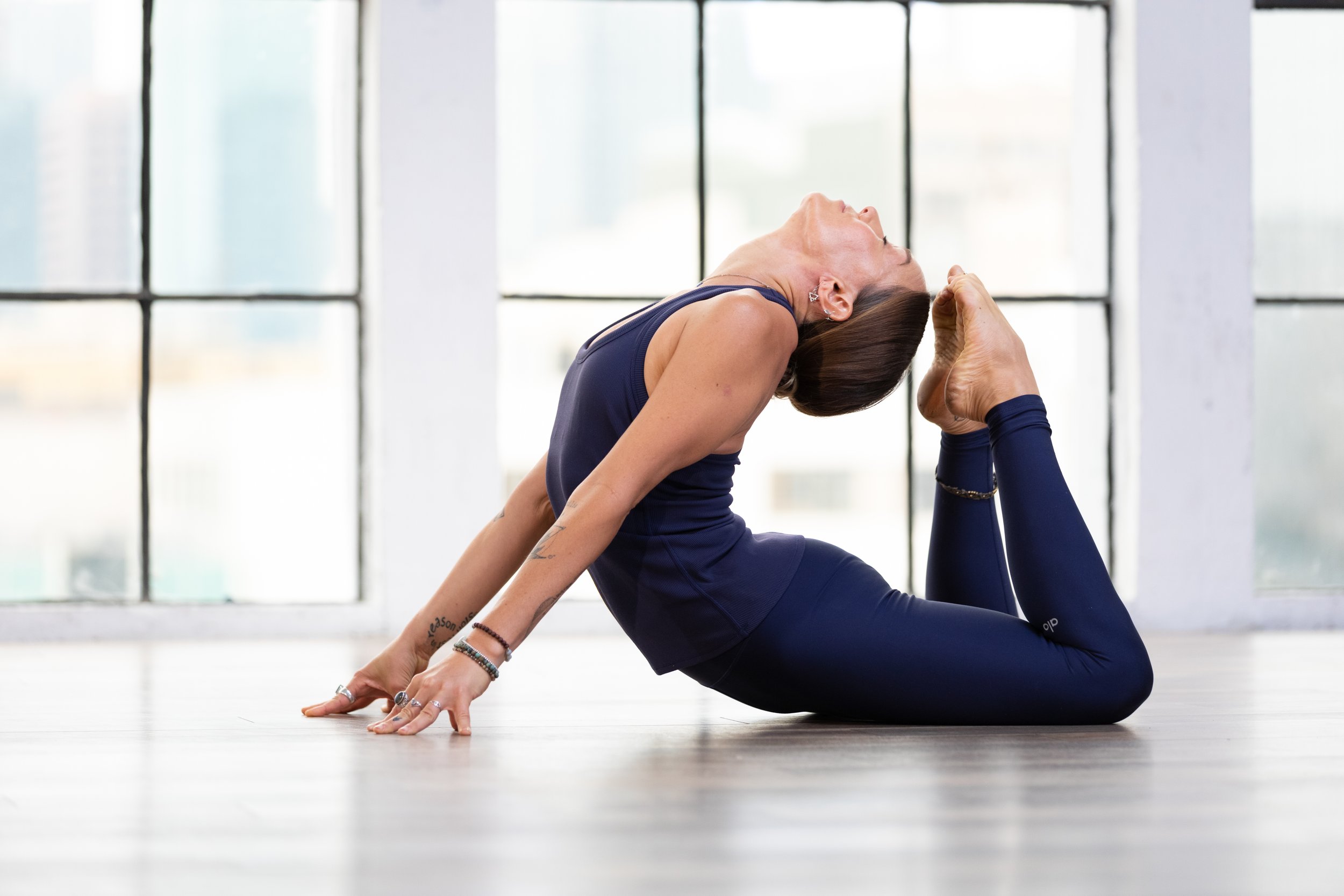Top Tips For Backbending
After teaching yoga for 10 years, I can confidently say that there’s two types of people out there:
The group that avoids backbends at all costs, because they find them scary and physically painful in their back.
And the group that is (almost annoyingly) so in love with heart openers that they decide to write an entire blog post about it just to try to convert the the people from group 1 into their weird, backbanding cult.
Okay, but seriously, jokes aside- I get it.
Not only are backbends incredibly complex postures (hello, the big ones always come at the end of classical sequencing for a reasons!), but they’re often taught without REALLY helpful (and simply, might I add) activations and preparations.
Also, I can’t not say it- if I happen to change your mind in this post, then you actually HAVE to check out the Heart Medicine series on my app (there’s a free 7 day trial, so you can literally just test it out no strings attached).
Ok, after that shameless plug, let’s dive into the tips:
Feet and leg strength and activation
Those of you who take my classes might be rolling your eyes real big right about now, because I speak to the feet and legs SO MUCH in my backbanding classes, you can probably hear those cues in your sleep at this point.
But hey, it works.
The more you press into your feet, or firm up through the legs (obviously this depends which specific shape you’re actually in) this will help to reduce crunching and collapsing into the low back.
Core activation
Okay, this one is super important, AND it’s honestly pretty tricky.
Why?
Because when we’re backbending, we’re opening the front line of the body- which is where the core is located. It can be tricky to keep something active WHILE you’re opening it. But, like many things, with practice it will come :)
Good news is, you already have that handy dandy tip about regarding the feet and legs.
Why is this helpful?
Well, because charging more into the lower body can help to lift up and out of the upper body. Meaning, the most you press through the feet and legs, the more likely it is you’ll be able to find that hug in and up of the pelvic floor.
Remember, always start with familiar, gentle shapes when you’re learning a new activation. So, rather than trying to find your core while you’re in full Wheel, work on it first in Cow Pose.
Back line strengthens
Oftetimes when people talk about backbends, I hear them say things like:
“My back isn’t flexible enough for that.”
Is there an element of flexibility needed?
Of course! Like many yoga postures, the spine is lengthened.
However, the truth is that backbends actually require a lot more STRENGTH in the backline of the body, above all else.
Think about an abdominal crunch: the front line of the body is closing (curling), and the backline of the body is opening (expansing/rounding).
Backbends are exactly the opposite. So, like I mentioned above, the frontline of the body is OPENING, and the backline of the body is doing that same motion as the core does in those abdominal crunches- it’s contracting in for STRENGTH.
A simple and super effective posture to practice for backstrength are Low Cobra pulses (think of them as back ab crunches).
Don’t forget the backline of the body extends all the way down to the heels!
That means even the booty and hamstrings need to work on strength for pain-free backbends.
Front line opens
Ok, so we’re strengthening the legs, the core, and the back body. Is there ANY flexibility in these shapes?
Of course there is.
I think the chest and shoulders are a pretty obvious area that need flexibility (I mean, these ARE called heart-openers, after all).
But let’s not forget that the front line of the body is the ENTIRE front side of you- including the lower body.
Hip flexors and quadriceps (in other words the front part of your thighs) need to get involved in your active flexibility drills in order to deepen your backbends.
Low Lunge, Low Lizard, or Bound Low Lizard are all great shapes to work opening in these areas.
The million dollar question: have you lured you into our backbending cult yet?!
If not, seriously, just give these little tips a try and see how it changes things for you. Truly, these shapes are meant to feel challenging, yes, but they’re also meant to feel GOOD.
When your low back is crunchy, and your shoulders are shrugging up towards your ears with your neck getting all scrunched up- there’s nothing feel good about that, am I right?
So, remember, active through the feet to lift you up and out of the belly, while strengthening the back body, and opening the frontline.
You’ve got this!






